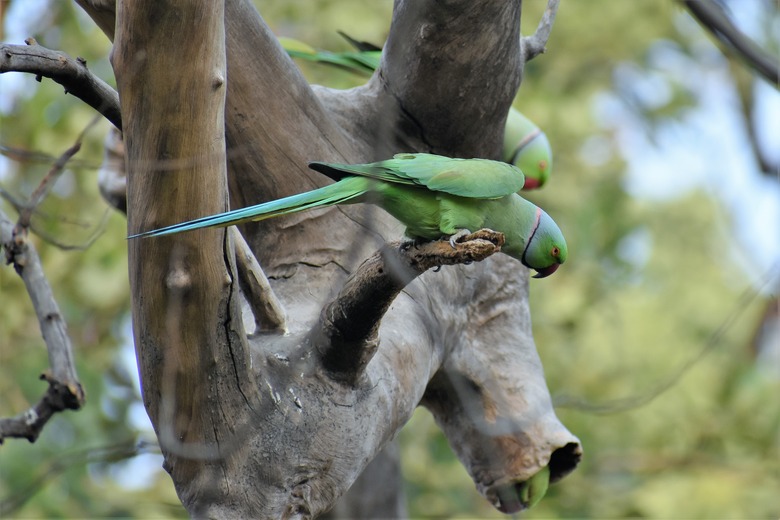How To Build Nesting Boxes For Indian Ringneck Parrots
Indian ringneck parrots can make playful pets who can be taught to talk and whistle. The males have a vivid blue ring around their neck that differentiates them from females, making it easy to select a pair for breeding. In the wild, Indian ringneck parrots nest in tree hollows. Build a ringneck breeding box from wood to make your birds feel right at home.
Is a nesting box needed?
Is a nesting box needed?
Only male Indian ringneck parrots sport the classic ring around the back of their neck. The marking develops when they reach sexual maturity, letting you know that it's time to start thinking about getting a nestbox. However, both a male and a female are needed to produce offspring, so if you have a lone male or all males in your aviary, there is no need for a nestbox.
If your birds are all females, they'll lay eggs whether or not there's a male around. Don't provide a nestbox, as it will encourage a female to "go broody" and try to hatch infertile eggs. She'll be less stimulated to nest if no nestbox is provided. You can also reduce the amount of sunlight in the room or slightly lower the temperature to simulate winter conditions.
Indian ringneck nesting box
Indian ringneck nesting box
Indian ringneck parrots can measure around 16 inches thanks to their long tail feathers. It's important that the ringneck box size is large enough so that both parents can move around without damaging the long plumes or stepping on eggs. A nesting box or hollow log should be about 30 inches tall and a minimum of 7 to 10 inches wide. Put a climbing structure, such as a chicken-wire ladder, inside the doorway so parents don't risk breaking the eggs by having to hop in and out.
A breeding pair should ideally have their own flight cage where they cannot see other breeding pairs. Flirtation with other birds in other cages can disrupt the breeding process, resulting in infertile eggs. Sometimes, two breeding pairs can share a cage as long as they are introduced to it at the same time to avoid territorial aggression. Each pair should have a nesting box of their choice, so put two or three nesting boxes in various locations to let them choose. Then, offer them the same nest every year.
Ringnecks prefer to raise their young in the same type of nest that they themselves experienced as a hatchling. If your bird was wild-caught, a hollowed log will be the preferred nest. Birds who were raised in plywood boxes will prefer such accommodations over another style of ringneck parrot nesting box.
Keep it simple
Keep it simple
A simple wooden box made of untreated plywood with a hinged lid and a 3-inch square or round doorway makes an ideal ringneck parrot nesting box. Formaldehyde fumes released from treated plywood can kill birds.
Indian ringneck parrots use their beak and claws to expand their hollow log nests in the wild, so you can expect they'll do the same to their nesting box. Make sure your box has a hinged lid so that you can easily access the inside for cleaning and disinfection after the young fledge. Remove all bedding, vacuum thoroughly, and disinfect with a bird-safe disinfectant to kill any mites or pathogens.
Make sure to identify the nesting box that your Indian ringneck parrots preferred, such as writing on the bottom of the nesting box with a permanent marker. Make note of where in the aviary or breeding flight cage it was hung. They will prefer to use this nesting box year after year in the same location.
